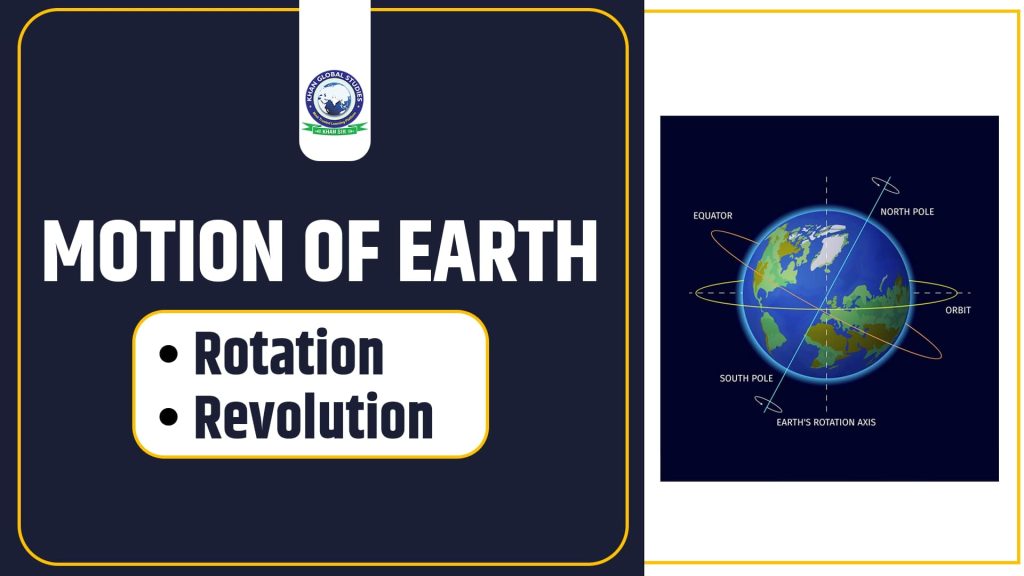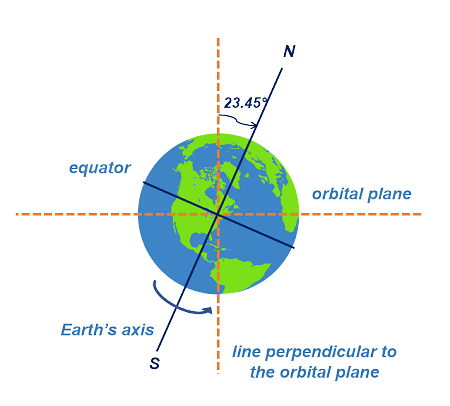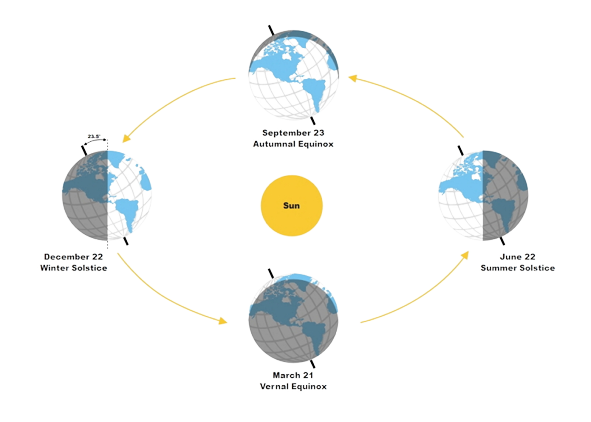
As we know, the Earth performs two types of motion: Rotation, and Revolution. When the Earth rotates or rotates on its axis then this rotation or spin is called the revolution of the Earth, similarly, the rotational motion of the Earth around the Sun is called the revolution of the Earth. In this article, we will discuss the motion of the Earth on its axis and also around the Sun.
The Earth takes about 24 hours to complete one revolution on its axis. This period of rotation is accepted as one Earth Day. One year is divided into summer, winter, spring, and autumn. The seasons change due to differences in the Earth’s position around the Sun. Because of the Earth’s spherical shape, only half of the Earth’s surface receives light from the Sun. Thus, the part of the Earth that faces the Sun is day and the remaining part is night.
Types of Earth’s Motion
There are two types of Earth’s motion:
- Rotation
- Revolution
Rotation
- The Earth rotates on its axis from west to east i.e. anti-clockwise and takes 23 hours, 56 minutes and 4.09 seconds to complete one revolution.
- Due to this rotation of the Earth, day and night occur.
- The Earth cannot be called a perfect sphere due to its rotation on its axis.
- The tilt of the Earth’s axis is 23.5 degrees and this is the reason for the cyclical change in the seasons.
- The Earth’s rotation largely determines the movement of the tides.
- Due to the rotation of the Earth on its tilted axis, there is a difference in the length of day and night in different parts of the Earth throughout the year.

Revolution
- The annual movement of the Earth is called rotation. Since the Earth’s path is elliptical, the distance between the Earth and the Sun varies.
- There are four essential positions of the Earth concerning the Sun. This happens because the Earth is tilted on its axis. These are the equinoxes and solstices.
Summer Solstice
On June 21, the vertical rays of the Sun are received at the Tropic of Cancer. This situation is known as summer solstice. At this time, the Northern Hemisphere has the longest day while the Southern Hemisphere has the shortest night.

Winter Solstice
On December 22, the Tropic of Capricorn receives the Sun’s vertical rays resulting in the shortest day in the Northern Hemisphere. This situation is called winter solstice.
Equinoxes
There are two positions of the Earth on March 21 and September 23, when the equator receives the vertical rays of the Sun, and day and night are equal throughout the world. These positions are accepted as equinoxes. The spring equinox occurs on March 21, and the autumnal equinox occurs on September 23.




